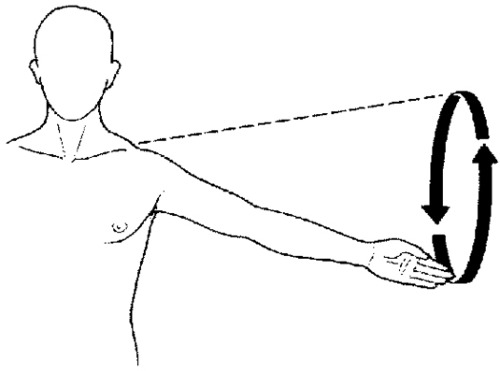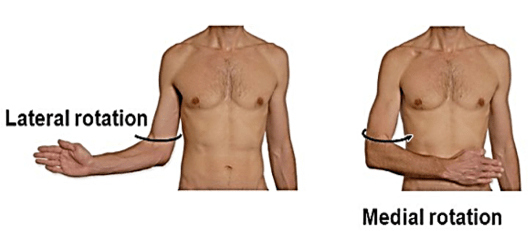Sports Science Skeletal System
1/49
Earn XP
Name | Mastery | Learn | Test | Matching | Spaced |
|---|
No study sessions yet.
50 Terms
Axial Skeleton
Protection( attachment and support)
Skull, Ribs, Vertebrae
Appendicular Skeleton
Movement (attachment and support)
Pectoral Girdle (clavicle, scapula), pelvic girdle (ilium, ischium, pubis)
Inferior
below/ further away from the head
Superior
above/ closer to the head
Proximal
nearer to where a limb attaches to the body
Distal
further to where a limb attaches to the body
Posterior
behind/nearer to the back
Anterior
in front/nearer to the front
Internal
located inside/ further away from the surface
External
located on/ near the surface
Lateral
further away from the midline of the body
Medial
closer to the midline of the body
Flexion
closing of the joint angle around the frontal axis at the joint

Extension
opening of the joint angle around the frontal axis at the joint

Hyperextension
over extension

Abduction
Bringing arms away from the body (frontal plane)

Adduction
Bringing arms toward the body (frontal plane)

Circumduction
moving in a circle

Lateral rotation
moving away from the body (transverse plane)

Medial rotation
moving toward the body (transverse plane)

Supination
rotating outwards

Pronation
rotating inwards

dorsiflexion
flexion in the ankle joint
plantarflexion
extension in the ankle joint
elevation
lifting/moving up (frontal plane)
depression
dropping/moving down (frontal plane)
Inversion
Medial rotation of the ankle joint
Eversion
Lateral rotation of the ankle joint
sagittal plane
Movement in front or behind the body in the frontal axis exa: walking, extension, forward roll
frontal plane
Movement that goes sideways in the sagittal axis exa: adduction, golf swing, cricket bowl
transverse plane
Movement that rotates around the body in the longitudinal axis exa: a triple axel, shot put, pronation
Tendon
Attach muscle to bone. Limited blood supply. For movement. Takes time to heal when damaged

Ligament
Attach bone to bone. For movement and provide support for the joint so it doesn’t dislocate. Takes time to heal when overstretched

(articulating) Cartilage
Provide a cushion between bones, reducing rubbing. Not possible to recover.

Fibrous joint
strong, least movement, protection, found in cranium
Cartilaginous Joint
quite strong, protection and some movement, found in vertebrae, ribs, and sternum
Synovial joint
weakest, most movement, with the most amount in the body.
Joint Capsule
a tissue that creates synovial joints and produces fluid from lining
Bursa
small fluid-filled sac lined by synovial membrane used to reduce friction
Pivot joint
synovial joint that allows rotation

ball and socket joint
synovial joint in shoulders and hips that allows the most movement

Hinge joint
synovial joint that moves on just one axis. In knee and elbow, can do flexion and extension

Condyloid joint
synovial joint that allows for circular motion, flexion, and extension. Metacarpals and metatarsals to phalanges.

Saddle joint
synovial joint that allows for flexion, extension, and other movements, but no rotation. In the thumb.

Gliding joint
synovial joints that move against each other on a single plane. In hands or foot that articulate by sliding in the wrist/ ankle.

Factors of Range of Motion (ROM)
-shape of surfaces of the articulating bones in the joints
-position and length of the restraining ligaments
-effects of the muscles and tendons at the joints
-the amount of soft tissues (skin/fat/muscle)
Range of Motion (ROM) impact
Large ROM normally beneficial, but can make joints and muscles susceptible to injury
Antropometry
the measurement of body segments and proportions of the human body, has applications in many areas of sport and health science.
value of antropometry
Talent identification, improvement of athlete, better equipment design
ergogenic design
Promotes correct posture, facilitates optimal ROM, improves performance